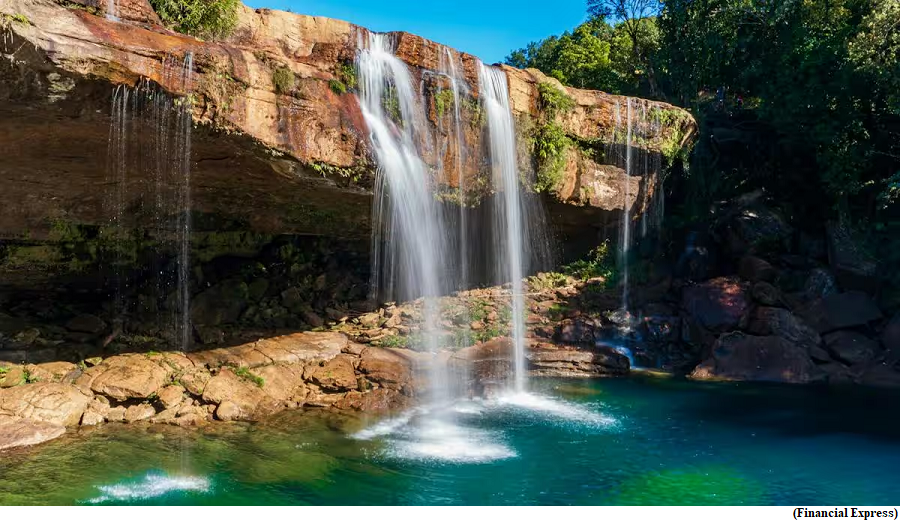Indigenous People and Climate Justice, The Eastern Himalayan Perspective (GS Paper 3, Environment)

Context:
- The Eastern Himalayan region is one of the biologically richest areas on Earth, with an abundance of endemic and rare species inhabiting the diverse landscapes. This region is also home to many Indigenous communities with unique cultures and traditions that are steeped in nature.
- Although blessed with natural largesse, this region is vulnerable to natural disasters and sits on the cusp of an impending climate and ecological crisis.
Missing community:
- The riparian Mising community is among those numerous Indigenous communities that inhabit the Eastern Himalayan region.
- Most of them live in clusters of small villages along the banks of the Brahmaputra river, in houses built on bamboo stilts that are designed to see them through the flood season, which used to be predictable, but has now become more intense and erratic.
- Like other tribal people of the region, they grow and gather most of their food, and with poultry and livestock, they are self-sufficient communities. Fermentation, smoke drying and sun drying of the seasonal produce sustains the Misings during the floods.
Dependency on water cycle & biodiversity:
- The Misings are dependent on the abundance of the land, with over a hundred varieties of flora used to make the traditional, fermented rice concoction that is believed to be the source of good health.
- These traditional foods and brews are varied, but common among the indigenous people of the Eastern Himalayas and very important to their cultural identities.
- The medicinal herbs and plants that are used are each known for their healing properties and are widely used to treat common ailments. The age-old diet of seasonal and local produce is dependent on the biodiversity and the water cycle that sustains it.
Human-wildlife conflict:
- One of the least reported impacts of the climate crisis is the issue of human-wildlife conflict, which is rampant across the foothills and valleys of the Eastern Himalayas.
- There are more casualties from human-elephant interactions in my native Assam, the largest state in the region, than in many other elephant-range countries.
- Studies have linked the proliferation of invasive vegetation to the warming and precipitation change that is evident across the region and is one of the drivers of human-wildlife conflicts.
Receding glaciers:
- The Hindu Kush Himalaya Assessment Report of 2018 forecasted the loss of over a third of glaciers in the Eastern Himalayas by 2100, even if warming is contained to 1.5 C degrees. Presently, average temperatures across the Hindu Kush Himalayas have already increased by 1.3 degrees Celsius.
- Scientists believe that 40 per cent of the glaciers in the Tibetan plateau could disappear by 2050 which means region-wide implications on the overall water, energy, and food security of the Eastern Himalayan region.
Impact of climate change:
- Across the region, the loss of forest cover, invasive vegetation and disappearance of native biodiversity have emerged as direct threats to the food security of millions.
- The impact of climate change on native biodiversity used as food and medicine by indigenous communities is an unknown but expected consequence.
- The lives, livelihoods and food security of the Misings, Karbis and other indigenous local communities across the Eastern Himalayan region are being undermined by the unfolding climate and biodiversity crises.
- The projected precipitation changes will cause water scarcity, drive biodiversity loss, and compromise food security and health, multiplying the vulnerabilities of these tribal populations.
Way Forward:
- Indigenous peoples represent 6 per cent of the world’s population. But they are stewards of over 80 per cent of the world’s biodiversity. As such, they have a huge role in the future of the planet and yet they are underrepresented in the global discussions about climate justice, including at COP 28, the biggest stage of all.
- Ensuring access to the traditional foods of our ancestors should play an integral role in the conversations about climate justice at the COP negotiations.
- World leaders must ensure that Indigenous peoples at the frontlines of the climate crisis and the unique ecosystems in the regions where they live like the Eastern Himalayas are protected from further impacts of the climate crisis.
- Countries must ramp up their commitments to slash greenhouse gas emissions so that we stay within the limits of 1.5⁰ C, especially among those highly polluting countries.


